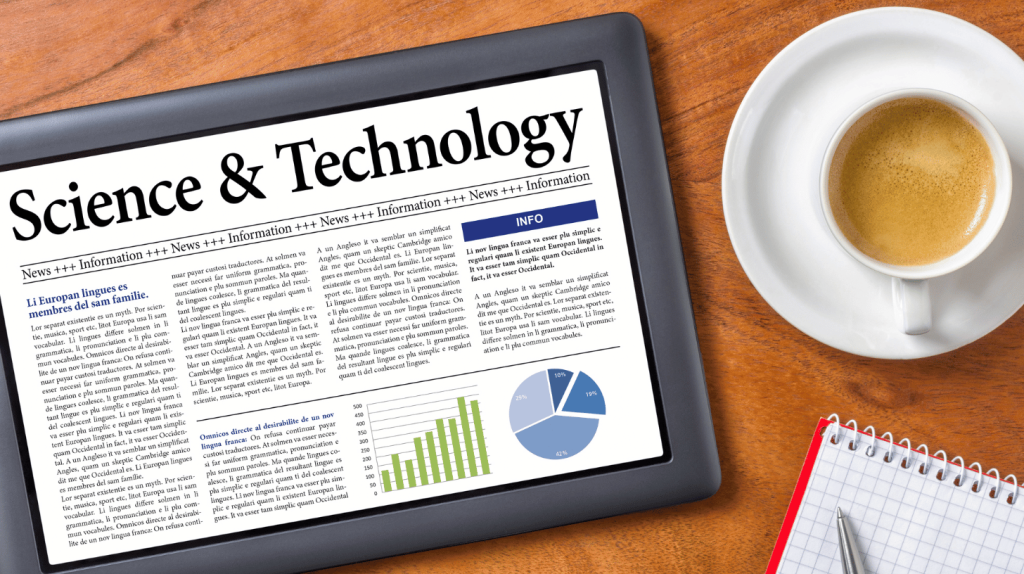Efficiency in research is paramount for advancing scientific knowledge and addressing pressing societal challenges. In today’s rapidly evolving scientific landscape, researchers face increasing pressure to produce impactful results in a timely manner. Establishing productive collaborations, leveraging existing datasets and resources, and developing strategic publication practices are key strategies for enhancing research efficiency. Collaboration enables researchers to pool their expertise, resources, and perspectives to tackle complex problems more effectively. Leveraging existing datasets and resources allows researchers to maximize the value of available information and accelerate the pace of discovery.
Utilizing strategic publication practices ensures that research findings reach the widest audience possible and have a meaningful impact on the scientific community. Here we briefly discuss some practical strategies to help you increase your research efficiency through collaboration, data utilization, and publication optimization to ultimately advance scientific knowledge and innovation as well as your scientific career. By implementing these strategies, researchers can optimize their workflows, produce high-quality publications, and make meaningful contributions to their fields.
Also Read:
How to Choose the Best Science Journal for Publishing Your Research

Collaboration: Maximizing Productivity through Teamwork
Collaboration offers researchers the opportunity to harness collective intelligence, resources, and expertise toward common goals. One of the greatest benefits of collaboration is its ability to transcend disciplinary boundaries and foster interdisciplinary approaches to problem-solving. By engaging with colleagues from diverse backgrounds, you can gain fresh perspectives, explore novel methodologies, and tackle multifaceted challenges that may otherwise be insurmountable. Furthermore, collaboration extends beyond individual research endeavors, facilitating the formation of research networks and consortia that amplify the impact of collective efforts.
Identifying potential collaborators within and beyond your immediate sphere of influence is crucial for initiating fruitful collaborations. This entails cultivating a broad professional network through conferences, seminars, and collaborative projects, as well as leveraging online platforms and social media to connect with other researchers worldwide. Effective communication and project management are critical to the success of your collaborative endeavors. Establish clear expectations, define roles and responsibilities, and maintain open lines of communication to foster synergy and minimize misunderstandings within research teams. Additionally, embracing transparency and accountability will help mitigate potential conflicts and ensure that collaborative projects progress smoothly towards their objectives.
For collaborative research, diversity of expertise generates innovative solutions and holistic insights. By assembling interdisciplinary teams comprising experts from various domains, you can capitalize on the synergies between different fields and uncover novel approaches to attack complex research questions. Foster an inclusive and respectful research culture to maximize the potential of collaborative endeavors and nurture a sense of belonging among team members.
Collaboration is not without its challenges, however, requiring navigation of such issues as divergent perspectives, power dynamics, and logistical constraints. Overcoming these challenges and cultivating a collaborative research culture requires concerted effort and commitment from all parties involved. By embracing the principles of mutual respect, equitable participation, and shared ownership of outcomes, you can harness the collective power of collaboration to drive your scientific progress and achieve transformative results. Strategic collaborations pave the way for groundbreaking discoveries, innovative solutions, and enduring partnerships that transcend disciplinary boundaries and advance the frontiers of knowledge.

Leveraging Existing Datasets and Resources
This era of big data gives researchers unprecedented access to vast repositories of existing datasets and resources, offering valuable opportunities to accelerate research progress and maximize efficiency. Leveraging existing data sources allows access to a wealth of information spanning diverse fields, from genomics and environmental science to social sciences and economics. By tapping into these rich reservoirs of knowledge, you can bypass the time-consuming process of data collection and focus your efforts on data analysis, interpretation, and hypothesis testing.
Identifying relevant datasets and resources is the first step towards harnessing the power of existing data for research purposes. This entails conducting comprehensive literature reviews, exploring online repositories, and collaborating with data custodians and domain experts to identify datasets that align with your research objectives. Exercise diligence in assessing the reliability, accuracy, and completeness of the data, as well as addressing potential biases and confounding factors that may affect the validity of your findings. Adherence to data privacy and ethical guidelines is essential to protect the rights and confidentiality of study participants and ensure compliance with regulatory requirements.
Robust methodologies and analytical tools, such as data cleaning, preprocessing, and transformation to enhance data quality and facilitate interoperability between different datasets, are available to extract meaningful insights from complex and heterogeneous data sources. Advanced statistical and computational techniques, such as machine learning and data mining, are needed to uncover hidden patterns, correlations, and associations within the data, which can lead to novel discoveries and actionable insights.
There are established ethical guidelines and regulatory frameworks governing data access, use, and sharing, including obtaining informed consent, protecting sensitive information, and preserving data security and confidentiality. Promote transparency, reproducibility, and integrity in your scientific inquiry. By harnessing the full potential of existing datasets, you can advance knowledge, address pressing societal challenges, and drive transformative change.

Strategies for Increasing High-Impact Publications through Efficiency
Efficiency plays a pivotal role in maximizing the impact and visibility of research publications, enabling researchers to disseminate their findings effectively and contribute to the advancement of knowledge. Setting clear research goals and priorities is essential for optimizing productivity and ensuring that efforts are focused on high-impact research avenues. By identifying key research questions, objectives, and milestones upfront, researchers can streamline their workflow, allocate resources judiciously, and maintain momentum toward publication goals.
Developing a strategic publication strategy aligned with career objectives is instrumental in increasing the likelihood of publishing high-impact research. Researchers must carefully assess the target audience, scope, and impact of their research findings, and tailor their publication strategy accordingly. This includes choosing appropriate journals with high visibility and relevance to the research topic, as well as considering alternative publication formats, such as preprint repositories, conference proceedings, and open-access journals, to maximize reach and accessibility.
Choosing the right journals for publication is a critical decision that can significantly impact the visibility and impact of research findings. Factors to consider when selecting target journals include journal reputation, audience reach, publication frequency, and peer-review process. Having a clear understanding of the specific requirements and preferences of target journals, including formatting guidelines, manuscript length, and citation style, is essential for ensuring successful submission and publication. See our article on selecting the best journal for publishing your research.
Further, writing concise and compelling manuscripts is key to capturing the attention of readers and maximizing the impact of research publications. Strive to communicate your findings clearly, concisely, and persuasively, using appropriate language, structure, and visual aids to enhance readability and comprehension. Utilize resources such as professional science editing to ensure that your manuscript is publication-ready. Moreover, adhere to established writing standards and conventions dictated by the journal, such as AMA, ACS, or APA style, can enhance the professionalism and credibility of the manuscript.
Responding effectively to reviewer feedback and revising manuscripts for resubmission is a crucial aspect of the publication process. Approach reviewer comments with an open mind, carefully addressing each point raised and providing clear explanations or revisions as necessary. Additionally, input from colleagues or mentors can provide valuable insights and perspectives for improving the quality and rigor of the manuscript. By iteratively refining their manuscripts based on reviewer feedback, you can enhance the likelihood of acceptance and publication of your paper in high-impact journals.
Leveraging preprint servers and social media to disseminate findings can further enhance the visibility and impact of your research publication. Preprint servers offer researchers the opportunity to share their findings rapidly and receive feedback from the scientific community before formal peer review, while social media platforms provide a platform for engaging with broader audiences and promoting research findings to policymakers, practitioners, and the general public. By harnessing the power of digital platforms for knowledge dissemination, you can amplify the reach and influence of your research publications, ultimately advancing scientific discourse and driving positive change in society.

Case Studies and Examples
Human Genome Project (HGP)
Successful Collaboration Efforts: One notable case study of successful collaboration is the Human Genome Project (HGP), a landmark international research endeavor that involved scientists from around the world working together to map and sequence the entire human genome. By pooling their expertise, resources, and data, researchers were able to achieve a monumental scientific milestone with far-reaching implications for genetics, medicine, and biotechnology. The HGP serves as a testament to the power of collaboration in tackling complex scientific challenges and driving transformative discoveries.
Higgs boson
Another example of successful collaboration is the discovery of the Higgs boson, a fundamental particle that plays a key role in the mechanism responsible for giving mass to other particles. The discovery, which was made possible through the collaborative efforts of thousands of scientists working at the European Organization for Nuclear Research (CERN), exemplifies the importance of international cooperation and interdisciplinary collaboration in advancing our understanding of the fundamental laws of nature.
Impactful Research Publications Achieved Through Data Utilization and Efficient Publication Strategies:
Framingham Heart Study
One example of impactful research publication achieved through data utilization is the Framingham Heart Study, a longitudinal cohort study that has yielded numerous insights into the risk factors and predictors of cardiovascular disease. By leveraging decades of data collected from participants in the Framingham community, researchers have identified novel biomarkers, developed predictive models, and informed public health interventions aimed at reducing the burden of cardiovascular disease worldwide.
mRNA vaccines for COVID-19
Efficient publication strategies can also contribute to the impact of research findings, as exemplified by the publication of the landmark study on the efficacy of mRNA vaccines for COVID-19. The study, conducted by researchers at Pfizer and BioNTech, demonstrated the remarkable effectiveness of mRNA vaccines in preventing COVID-19 infection and paved the way for their widespread deployment in the global fight against the pandemic. By prioritizing rapid data analysis, transparent communication, and collaborative partnerships, the researchers were able to disseminate their findings quickly and effectively, ultimately saving countless lives and mitigating the impact of the COVID-19 pandemic.

Conclusion
By using key strategies to enhance your research efficiency, including collaboration, data utilization, and publication optimization, you can leverage collective expertise and resources to tackle complex scientific challenges more effectively. Moreover, leveraging existing datasets and resources will enable you to maximize the value of available information and accelerate the pace of discovery. Strategic publication practices ensure that research findings reach the widest audience possible and have a meaningful impact on the scientific community.
Interdisciplinary research collaborations, spanning traditional disciplinary boundaries, can lead to breakthrough discoveries and novel solutions to complex problems. Moreover, fostering partnerships between academia, industry, and government can accelerate the translation of research findings into real-world applications and societal impact.
Want more information on scientific useful articles? Subscribe to SciTechEdit’s monthly newsletter.




